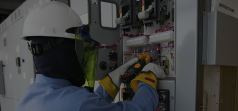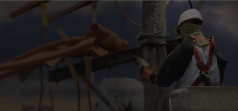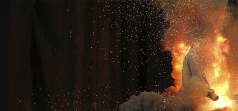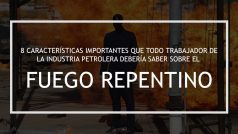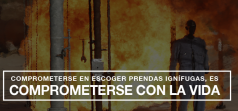Los trabajadores del área eléctrica enfrentan constantemente riesgos de accidentes por arco eléctrico durante sus operaciones diarias por la propia naturaleza de su trabajo. La prenda, correctamente especificada, ofrece protección, previene lesiones y salva la vida del trabajador. Cuando hay un accidente por arco eléctrico, las heridas más graves generalmente son resultado de la utilización de ropa no resistente al fuego repentino que entra en ignición, se inflama y continúa su combustión hasta que se quema por completo, causando quemaduras mucho más graves que el propio efecto del arco eléctrico en sí. El uso de prenda con su apropiada clasificación para arco eléctrico (AR) presenta una larga historia de protección a los trabajadores y salvaguarda de sus vidas en America Latina y en mercados más maduros, como en los EUA. Vamos a examinar las tres situaciones que son las causas más comunes de un evento de arco eléctrico:
- Trabajo energizado que debería haber sido desenergizado previamente.
- Error o falla humana.
- Mantenimiento precario del equipo.
1. Trabajo energizado
La NFPA 70E indica la desenergización previa de los equipos para que los trabajadores actúen con mayor seguridad y, cuando realmente no fuese posible, utilizar una autorización para trabajo en lugar energizado para documentar si el trabajo puede realizarse con seguridad incluso con el equipo energizado.
El trabajo energizado sólo debe hacerse cuando la desenergización se considere inviable, teniendo en cuenta el proyecto del equipo y las limitaciones operacionales, o cuando la desenergización cree riesgos adicionales. Por ejemplo, en los hospitales, la remoción de la energía para realizar el trabajo eléctrico crearía una situación adversa para los pacientes.
Los trabajos realizados en equipos energizados se ven, muchas veces, en situaciones de presión por falta de tiempo para realizar una tarea o en situaciones en que el trabajador considera que tiene mucha experiencia para operar en equipos energizados
Es importante resaltar que la decisión de trabajar con el equipo energizado puede causar lesiones, invalidez o incluso la muerte del trabajador
2. Error o falla humana
El error o la falla humana que involucra electricidad es otra causa de accidentes por arco eléctrico catastróficos. La falla en verificar la ausencia de tensión, la utilización de equipo de prueba incorrecto, el exceso de confianza, la complacencia, la comunicación deficiente de colegas de trabajo y la falta de procedimientos de bloqueo y/o de señalización han sido causas básicas de accidentes por arco eléctrico.
La comunicación inadecuada con la central de operaciones puede permitir que el sistema sea re-energizado posteriormente. O algunos alimentadores pueden desconectarse, pero puede haber alimentadores adicionales ocultos o no evidentes debido al diseño del equipo y/o del sistema como un todo.
Algunos trabajadores y empleadores alegan que no necesitan equipos de protección personal (EPP), incluyendo la prenda, pues desenergizan todos sus equipos, eliminando el riesgo. Esta línea de pensamiento es errónea.
El procedimiento de desenergización del equipo se considera un trabajo energizado y requiere EPP contra arco eléctrico y fuego repentino. Usted debe verificar con un medidor de voltaje si, de hecho, hay una falta de voltaje y nunca retirar el EPP.
3. Mantenimiento precario de los equipos
Todo el equipo debe tener una rutina de mantenimiento periódico. No obstante, en circunstancias de reducción de costos, el mantenimiento se ignora o se realiza incorrectamente, comprometiendo la seguridad a largo plazo del sistema. Equipos que no son operados y mantenidos correctamente, pueden fallar inesperadamente causando accidentes.
La falta de limpieza y de mantenimiento provoca corrosión, lo que lleva al aumento de la resistencia y del calor indeseado. Este es el principal culpable por el colapso del sistema eléctrico y por las posibles causas de eventos de arco eléctrico.
Los equipos, cuando no se operan y mantienen adecuadamente, pueden fallar inesperadamente causando accidentes. El arco eléctrico sucede debido a los daños de la falta de mantenimiento en los equipos y sus consecuencias causan lesiones en los trabajadores que interactúan con el equipo o incluso en los que están a su alrededor.
Reglamentos de la industria y normas de consenso
OSHA, NESC, NFPA y el estándar NFPA 70E determinan el uso de prendas de protección con clasificación AR/ FR para prácticas eléctricas seguras en el lugar de trabajo.
Los reglamentos de la OSHA establecen que las empresas deben priorizar la seguridad y suministrar un lugar de trabajo libre de riesgos reconocidos que puedan causar daños. Los reglamentos suministran las siguientes etapas para las organizaciones:
1. Realizar una evaluación de riesgo del lugar de trabajo.
2. Suministrar protección adecuada, como EPP, para riesgos identificados.
3. Capacitar a los trabajadores sobre los peligros presentes y el uso de EPP para crear un ambiente de trabajo más seguro.
Estos factores, así como las normas reguladoras y los estándares de la industria relacionados a la seguridad en electricidad, demuestran la necesidad continua de proteger diariamente a quienes trabajan con electricidad contra un accidente por arco eléctrico
Solución: Uso diario de prenda ignífuga
Nadie planifica un accidente por arco eléctrico, por lo tanto, lo correcto es prepararse para los peligros que este presenta.
Crear un local de trabajo seguro significa, permitir el tiempo de inactividad necesario para desenergizar el equipo para una manipulación segura a pesar de los inconvenientes para las operaciones. Eso también significa suministrar a los trabajadores prenda con protección adecuada contra arco eléctrico y fuego repentino.
Alineando las prendas ignífugas AR/FR con los tipos de riesgo
NESC exige que las operadoras y empresas de energía evalúen los riesgos de las actividades ejecutadas en equipos energizados. Si la energía presente excede 2 cal/cm2, los trabajadores deben usar prenda ignífuga con una clasificación de arco igual o mayor que la energía incidente del equipo con el cual trabajan.
Para cumplir la NFPA 70E, los empleadores también están obligados a ejecutar una evaluación de riesgo de arco eléctrico para determinar el nivel de energía incidente potencial del peligro y el límite de aproximación en relación con la protección del arco eléctrico o el área total en que el peligro existe. Cuando sea necesario, deben usar prenda de protección que responda a la norma ASTM F1506, sobre las especificaciones de desempeño mínimo para indumentaria de protección para trabajadores expuestos al riesgo de arco eléctrico.
Para anticipar los niveles de energía, la NFPA 70E denota dos principales esquemas de análisis de energía incidente: el método de cálculo y el método de tabla. Es importante notar que estos procedimientos no pueden combinarse en el mismo equipo.
Para el método de cálculo, las potenciales energías incidentes de varios equipos se calculan usando fórmulas y/o softwares comercialmente disponibles. La dificultad del método de cálculo es relativa a la complejidad del sistema eléctrico. El método de la tabla caracteriza los sistemas de prenda AR/FR por las categorías de EPP. En la tabla, la norma NFPA 70E enumera las piezas típicas del equipo, sus condiciones operacionales y la categoría de EPP necesaria para cada nivel de energía.
Especificar la tela
Una vez que se determinen la energía incidente y la clasificación del arco eléctrico, usted podrá avanzar en la selección de la mejor prenda con clasificación AR/FR.
Primero, comience por seleccionar la tela: es importante entender al fabricante de la tela ignífuga, su historia, experiencia, línea de productos, competencias y buscar por marcas que suministren la comodidad y el desempeño que respondan a las necesidades de su lugar y tareas de trabajo.
El uso diario de prenda AR/FR también debe ser lo más cómodo posible para el trabajador. Realice una prueba de desgaste de varias piezas de la prenda para evaluar el movimiento y transpirabilidad para garantizar que los trabajadores puedan ejecutar sus actividades de forma eficaz y confortable.
Se deben considerar las condiciones externas de trabajo. Las necesidades de telas o sistemas de capas de telas en diversos climas pueden ser diferentes, como productos térmicos para climas fríos y diseños ligeros de capa única para condiciones calientes y húmedas.
Los accidentes por arco eléctrico son inesperados y peligrosos, y pueden ocurrir durante varios puntos de la rutina diaria de los trabajadores de la industria eléctrica. Al usar prendas AR/FR, los trabajadores pueden equiparse para realizar sus trabajos de manera segura, eficiente y confortable, y todo contribuirá a la concentración en su tarea más importante: hacer bien el trabajo y volver a casa con seguridad.



